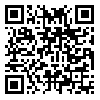Volume 17, Issue 10 (January 2020)
Nursing and Midwifery Journal 2020, 17(10): 780-809 |
Back to browse issues page
Download citation:
BibTeX | RIS | EndNote | Medlars | ProCite | Reference Manager | RefWorks
Send citation to:



BibTeX | RIS | EndNote | Medlars | ProCite | Reference Manager | RefWorks
Send citation to:
Mohammadi E, Salmani F. THE PRACTICES AND BARRIERS TO ADULT VISITING IN INTENSIVE CARE UNITS: AN INTEGRATED REVIEW. Nursing and Midwifery Journal 2020; 17 (10) :780-809
URL: http://unmf.umsu.ac.ir/article-1-3629-en.html
URL: http://unmf.umsu.ac.ir/article-1-3629-en.html
1- Professor of Nursing, Department of Nursing, Faculty of Medical Sciences, Tarbiat Modares University, Tehran, Iran
2- Nursing And Midwifery Sciences Development Research Center, Najafabad Branch, Islamic Azad University, Najafabad,Iran (Corresponding Author) ,ft_salmani@yahoo.com.au
2- Nursing And Midwifery Sciences Development Research Center, Najafabad Branch, Islamic Azad University, Najafabad,Iran (Corresponding Author) ,
Abstract: (4582 Views)
Background & Aims: In the intensive care unit, critical patients are admitted to care. The family visits in these units are different from other units. Different hospitals impose restrictive regulations or even prohibitions for visiting or the form and type of visitings are different. These restrictive visitings can be stressful for the patient and family and they may have consequences. The reasons for these special regulations are different, but they are not known and well-defined. The aim of this study was to investigate the practices and barriers of visiting in adult intensive care units. Materials & Methods: This study is an integrated review of texts related to the methods and barriers for visiting the adult intensive care units. Studies in CINAHL, Medline, Scopus, Cochrane Database of Systematic Reviews, Iran Medex, Scientific Information Database (SID), and Google Scholar databases were reviewed from 1990 to 2017. During the search, 51 articles, 1 dissertation and one book in this field were reviewed and selected. Data analysis was performed using Russell's (2005) method. Results: Analysis of the data showed that there are four methods of visiting in the intensive care units: restricted, open, liberalized, and according to the patient's preferences. There were various barriers to visiting in the intensive care units, the most important of which is the belief that the staff has a negative experience in the field of visiting and they believe that it is not beneficial for the patient. Some of the negative beliefs that were mentioned in most studies are increased risk of infection, interference with treatment and care, increased psychological and physiological stress, and patient and family fatigue. Conclusion: The choice of method or type of visiting in the intensive care units is influenced by the assumed, experienced or subjective obstacles of personnel and managers. Given that one of the main barriers to visiting is the negative beliefs regarding visits to the intensive care unit, it is recommended that appropriate training be provided for ICU staff in order to modify their beliefs regarding patient visits.
Type of Study: Review article |
Subject:
پرستاری
Send email to the article author
| Rights and permissions | |
 |
This work is licensed under a Creative Commons Attribution-NonCommercial 4.0 International License. |






 gmail.com, unmf
gmail.com, unmf